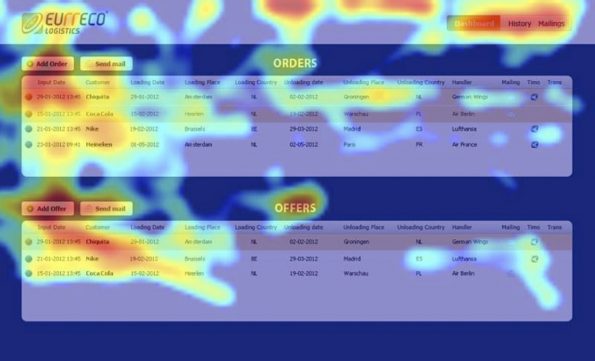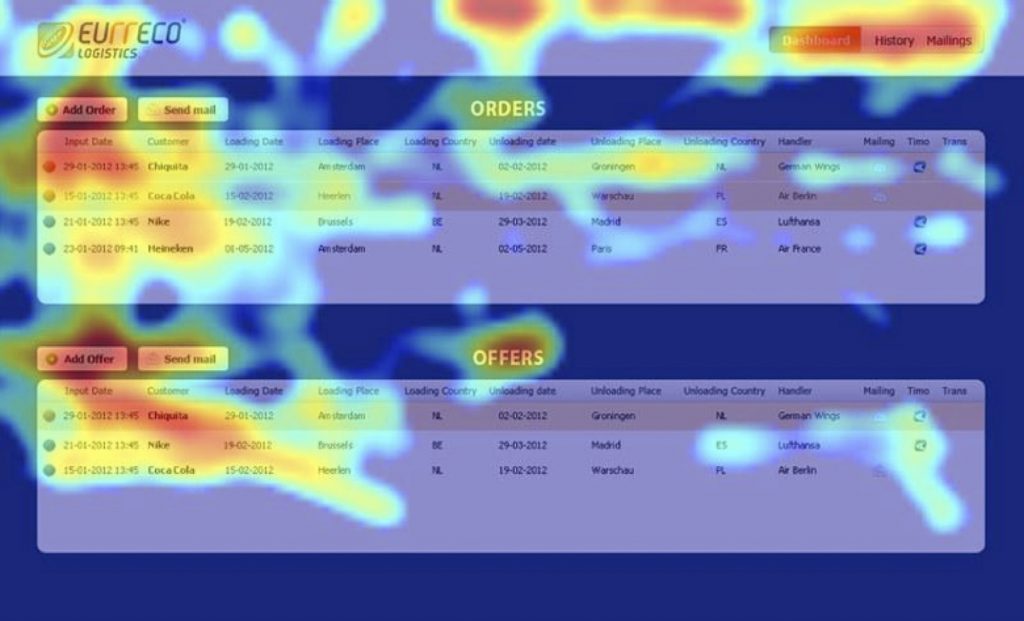Guide on Heatmaps – 5 Ways They Help Your Website
A heatmap is used in carrying data analysis and presentations. This technology around visualization is key in communication. Visualizing data has a great impact on people as our brains tend to process that data faster and it has a long-lasting impression. Heatmaps use color variation to represent data variation over a given space. Different colors are used to outline various information, an example is looking at a heatmap of the ocean, red would indicate warmer water while the cool areas are represented by blue. This is much easier to comprehend and analyze as compared to other methods. Website heatmaps collect data on a web-page and group the data points using color shades.

Image Source: https://flickr.com/photos/stormadvies/8291231140/
You choose the type of heatmap you want depending on the information you want to be analyzed. For example, the scroll map shows the frequency of customers scrolling down a page. This can be used to provide information on how a business is performing especially in terms of webpage analysis. It also helps one understand how visitors are interacting with a website. It shows you the specific areas on the site that get the most clicks and those with the least clicks.
Benefits of Using Heatmap on Your Website
Data representation from website heatmaps plays a vital role in influencing decision-making. This information can shape the decisions ensuring that the website achieves the desired goals. Below are some of the benefits of using a heatmap on your website.
Web Page Optimization
Heatmaps enable you to identify the areas on your website that get the most clicks from visitors and this can help in making informed decisions such as where to place crucial information. Research shows that most website visitors have a given pattern when reading a book. Ideally, they glance at the upper left side followed by the upper right and lastly proceed to the lower side of the page. Having such vital details, one can make decisions on where to place a new product and other important information where it will attract the most attention.
Website heatmaps also come in handy when redesigning a website. When you have an idea of your visitors’ engagement positions, you will be able to adjust the content on the page to improve their overall experience. You can also optimize the page depending on where the visitors are on your sales funnel.
Boost Conversions
Heatmaps are also a crucial tool when you are looking to increase the conversion rates. If you want to capture visitors into your marketing scope by encouraging them to provide their emails or claim a certain offer, website heatmaps will come in handy.
For an e-commerce website, a heatmap indicates how many visitors see the purchase button and how many of them click on it. If you are running an online casino comparison website, website heatmaps can identify how many players visit the platform, and how many of the visitors that signed up. Finally, it shows you how many of those that signed up and claimed the available bonuses. Players have access to various casino bonuses such as welcome bonus, deposit offers, and no deposit offers. With this information, you can gauge the bonus options that most players prefer.
Effective Communication
Having data on a heatmap enables you to improve communication with the relevant stakeholders. Armed with the visual data, you are able to explain the facts and points better as opposed to using words alone. This will help the business, as decisions will be made based on facts and translate to better performance of the business.
Strengthens Testing
During website optimization, performing some tests is crucial to ascertain the outcome of the changes. Website heatmaps will help greatly in determining if the changes will have a positive or negative implication. One method of testing is the A/B testing where you make two versions of the same page where the second contains the relevant changes made on the website. This greatly helps in optimizing your web page in the right direction.
Identify Problems
Website heatmaps help in identifying the challenges visitors face when using a website. Most often when visitors are not converting the way you expected, the problem could be technical. A heatmap, can for example, indicate if there could be a problem that mobile users are facing which you could have missed when assessing the website on desktop.

